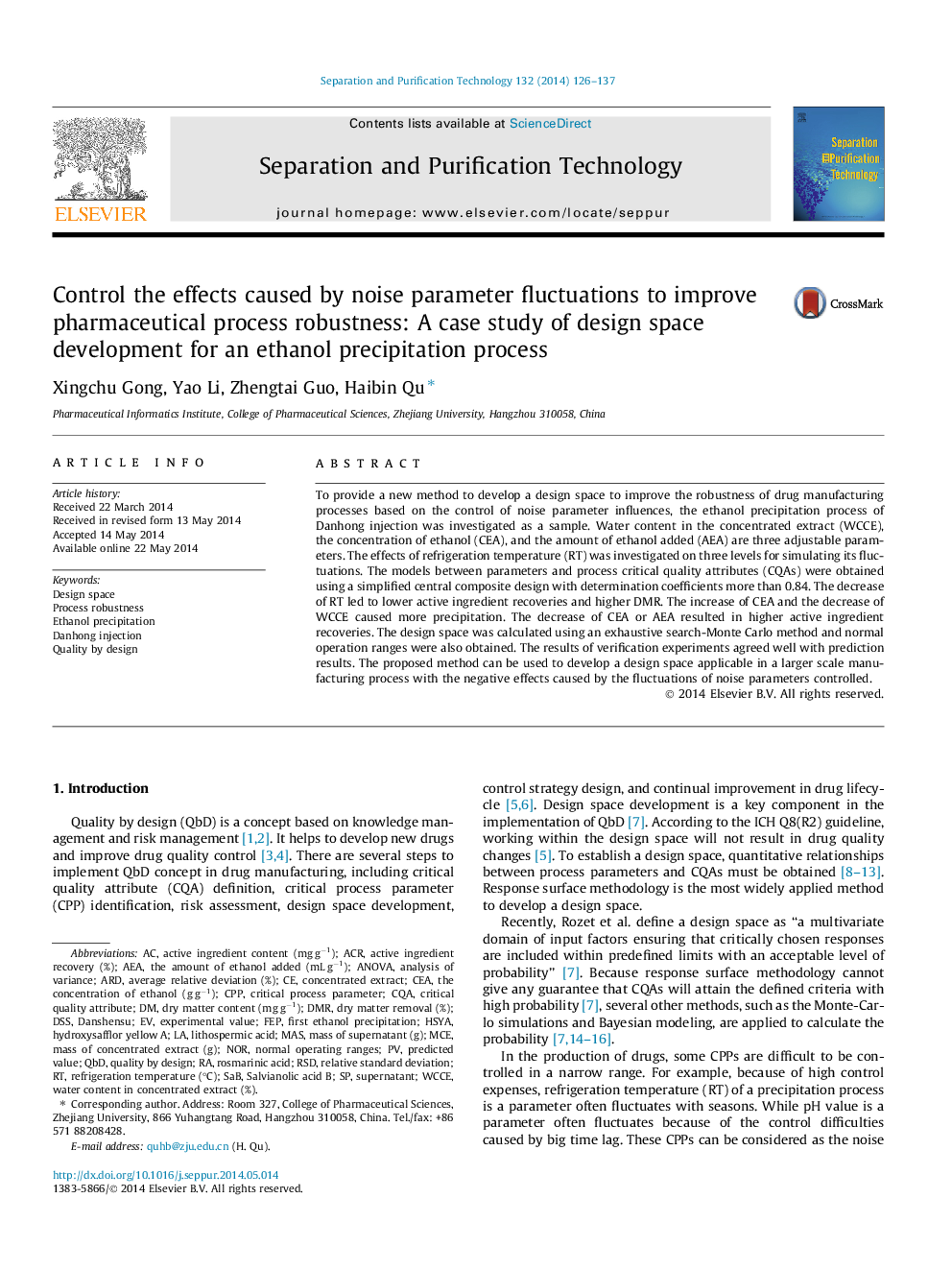| Article ID | Journal | Published Year | Pages | File Type |
|---|---|---|---|---|
| 641003 | Separation and Purification Technology | 2014 | 12 Pages |
Abstract
To provide a new method to develop a design space to improve the robustness of drug manufacturing processes based on the control of noise parameter influences, the ethanol precipitation process of Danhong injection was investigated as a sample. Water content in the concentrated extract (WCCE), the concentration of ethanol (CEA), and the amount of ethanol added (AEA) are three adjustable parameters. The effects of refrigeration temperature (RT) was investigated on three levels for simulating its fluctuations. The models between parameters and process critical quality attributes (CQAs) were obtained using a simplified central composite design with determination coefficients more than 0.84. The decrease of RT led to lower active ingredient recoveries and higher DMR. The increase of CEA and the decrease of WCCE caused more precipitation. The decrease of CEA or AEA resulted in higher active ingredient recoveries. The design space was calculated using an exhaustive search-Monte Carlo method and normal operation ranges were also obtained. The results of verification experiments agreed well with prediction results. The proposed method can be used to develop a design space applicable in a larger scale manufacturing process with the negative effects caused by the fluctuations of noise parameters controlled.
Keywords
CQAHSYAACRSABNORDMRARDMCEDSSDanshensuCPPFEPRSDAEAQbDProcess robustnessCeAsupernatantSalvianolic acid BLithospermic acidrelative standard deviationEthanol precipitationMASanalysis of varianceANOVADanhong injectionRosmarinic acidDesign spaceHydroxysafflor yellow ACritical quality attributecritical process parameterQuality by design
Related Topics
Physical Sciences and Engineering
Chemical Engineering
Filtration and Separation
Authors
Xingchu Gong, Yao Li, Zhengtai Guo, Haibin Qu,
